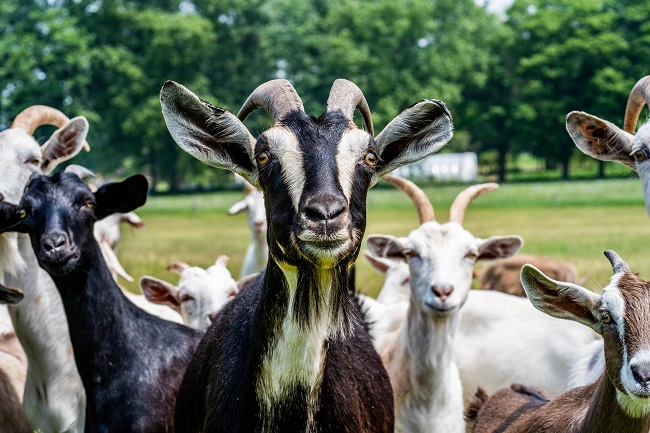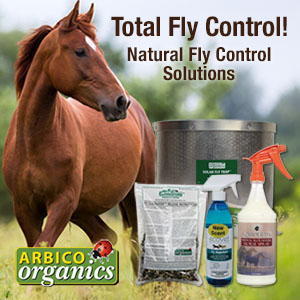
The goal of any goat-herd health program should be to increase efficiency and productivity. Herd health programs should include general husbandry, nutrition, and parasite and vaccination programs. Your emphasis should be on disease prevention rather than treatment. There are three major approaches for disease control:
#1 Keep resistance high.
#2 Avoid exposure.
#3 Recognize and address diseases early.
Using all three approaches together is the most effective way to eliminate or minimize disease costs and losses in your herd.
Herd Health Procedures for Adults
Does
Six weeks before breeding does, trim their feet if necessary. Treat any animal that has foot rot or foot scald. Separate those with foot rot from those without and institute a treatment and eradication plan for foot rot. Read this article for more information on identifying and treating foot rot and foot scald. Determine the need for deworming. Palpate the outside of the mouth for jagged teeth and float the teeth or cull as necessary. Palpate udders for the presence of mastitis or hard tissue in the udder that may indicate old or chronic mastitis. Cull any does that are showing signs of mastitis. Vaccinate with clostridium per fringes C and tetanus C, D, and T.
Bucks
Trim feet if necessary. Consider a breeding soundness exam by your veterinarian. Palpate the testicles. The testicles should be firm. If the testicles are mushy feeling, this could be an indication of infertility. Measure scrotal circumference. Check body condition. Thin bucks should receive 1 percent of their body weight of grain a day along with a forage diet. Moderate condition bucks should receive 0.5 percent to 1 percent of their body weight of grain a day along with a forage diet. Vaccinate with an eight-way clostridial vaccine. Bucks can be more susceptible to clostridial diseases during breeding season so an eight-way is sometimes preferred over C, D, and T, but it may cause vaccine site reactions. Trim the beard to decrease urine smell.
Procedures for Adults Two Weeks Before Breeding
Does
Determine the need for deworming. Flush thin does by feeding 0.5 to 1 pound of corn or barley per head per day. Continue for two weeks into the breeding season. Flushing will improve kidding percentages. Place does on high-quality pasture during breeding.
Bucks
Determine the need for deworming.
Procedures for Adults at Breeding
Does
Weigh doelings; they should be 65 percent of their adult weight, approximately 70 pounds, if the does in your herd average 105 to 110 pounds. Consider limiting the time with the bucks to 42 days. Keeping a 42-day breeding season will make management easier and decrease disease problems such as parasites, diarrhea, and pneumonia.
Bucks
Use one buck per 30 to 35 does. It is best to divide the flock into single-buck units, but if this is not possible, use bucks of similar size in a group, and only use bucks that have been together prior to the time of breeding. Supplement bucks with 1 to 2 pounds of grain per day, depending on their weight loss.
Provided by Dee Whittier, DVM, MS, Veterinary Extension Specialist, Kevin Pelzer, DVM, MPVM, Large Animal Clinical Sciences, and Nancy Currin, DVM, Veterinary Extension Publication Specialist, Virginia Tech College of Veterinary Medicine.
Did You Know
Goats are members of the cattle family, The same can be said for sheep and antelope.
Unlike any other animal goats have rectangular pupils in their eyes.
Related Articles & Free Email Newsletter Sign Up
How to Prevent and Treat Goat Abscesses
How to Recognize and Prevent Impending Health Problems in Goats
The 4 Main Causes of Pneumonia in Goats




Comment here